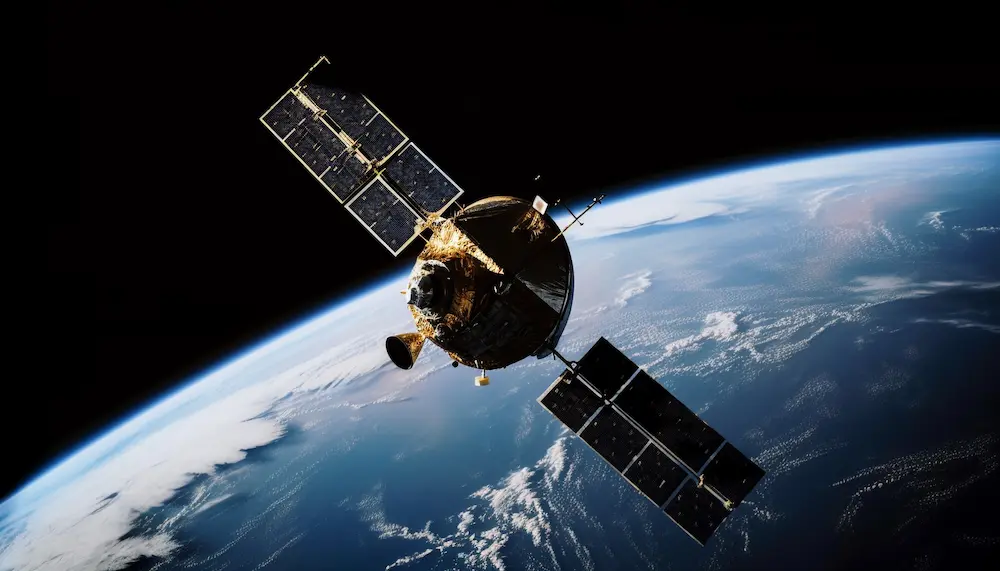
In a stunning technological leap, a Chinese satellite has outperformed Starlink using a mere 2-watt laser from 36,000 km above Earth
The Candle That Outshone a Constellation
Laser Leap – In what experts are calling a “quantum leap” in satellite communication, Chinese scientists have achieved a 1 Gbps data transmission from a satellite orbiting 36,000 kilometers above Earth, using a laser no more powerful than a nightlight. The feat, accomplished with a 2-watt laser, has outpaced Starlink’s performance by a factor of five.
While Starlink satellites operate in low Earth orbit (LEO) at around 550 kilometers, China’s unnamed satellite sits in geostationary orbit, more than 60 times farther away. Despite this vast distance and the challenges of atmospheric turbulence, the Chinese team managed to beam high-speed data to Earth with remarkable clarity.
The breakthrough was made possible by a novel technique called AO-MDR synergy—a fusion of Adaptive Optics (AO) and Mode Diversity Reception (MDR). This method corrects atmospheric distortions and captures scattered signals, dramatically improving signal strength and reliability.
Behind the Beam: How China Cracked the Code
The experiment was conducted at the Lijiang Observatory in southwest China, where a 1.8-meter telescope equipped with 357 micro-mirrors tracked the satellite. These mirrors reshaped the distorted laser light, while a multi-plane converter split the signal into eight channels. A real-time algorithm then selected the three strongest signals for data extraction.
The result? A 91.1% success rate in usable signal transmission, up from 72% in previous attempts. This improvement is critical for high-value data transfers, such as HD video streaming or secure communications. The researchers validated their results through multiple experimental runs, confirming the robustness of their approach.
This isn’t China’s first foray into laser-based satellite communication. In 2020, the Shijian-20 satellite achieved 10 Gbps downlinks, though the laser power used remained classified. The current experiment, however, is notable for its minimal power usage and long-range success, making it a potential game-changer in global data infrastructure.
Implications: A New Era in Space Communication
The implications of this achievement are vast. First, it challenges the dominance of Starlink and other Western satellite internet providers by offering a faster, more efficient alternative. Second, it demonstrates China’s growing prowess in space-based technologies, from quantum communication to orbital logistics.
Laser communication offers several advantages over traditional radio frequency (RF) systems: higher bandwidth, lower latency, and reduced risk of interception. As RF bandwidth becomes increasingly congested, laser systems could become the backbone of next-generation satellite internet and interplanetary communication.
Moreover, this development could have military and strategic applications. Secure, high-speed laser links between satellites and ground stations could enhance command-and-control systems, surveillance, and encrypted data transfer, areas where speed and reliability are paramount.
As the U.S. and China continue to compete for technological supremacy, this breakthrough adds another layer to the unfolding space race. It also raises questions about the future of global internet governance, data sovereignty, and the militarization of space.
Conclusion:Laser Leap
China’s 2-watt laser satellite transmission isn’t just a scientific milestone, it’s a geopolitical statement. By outperforming Starlink from 36,000 kilometers away, Beijing has signaled its intent to lead the next frontier of communication technology. As the world watches this laser-powered leap, one thing is clear: the space race just got a lot more intense, and a lot more luminous.
Stay updated with the latest news on Rapido Updates. Keep yourself updated with The World, India News, Entertainment, Market, Gadgets, Sports, and many more
Global Oil Shock: Israel’s Attack on Iran Sparks Inflation Fears & Rupee Volatility
1 thought on “Laser Leap: China’s 2-Watt Satellite Beam Outpaces Starlink in Space Tech Showdown”